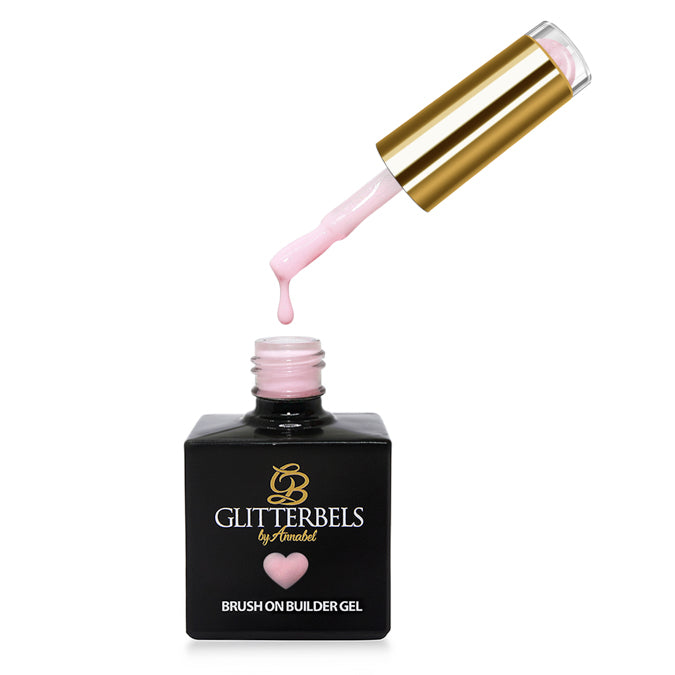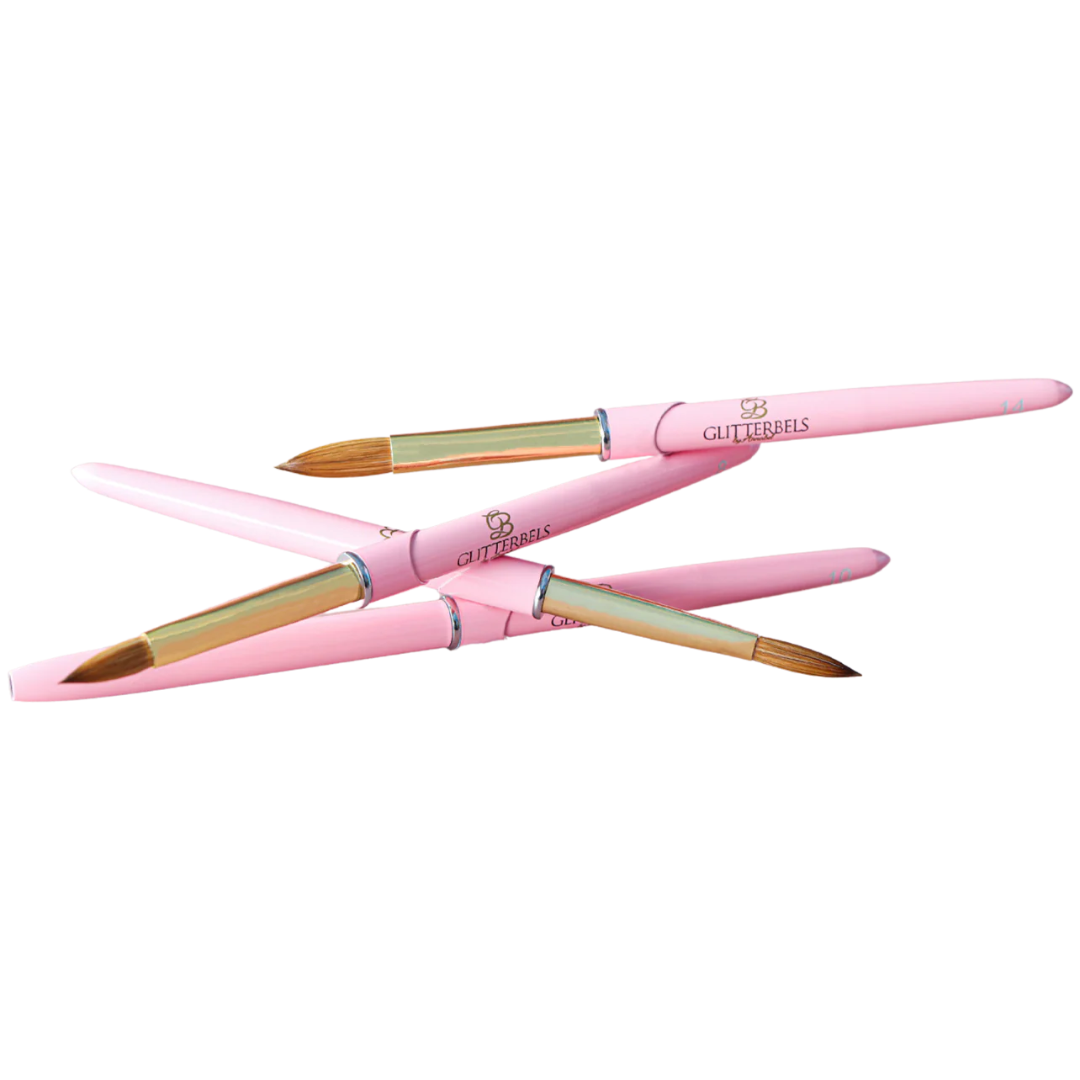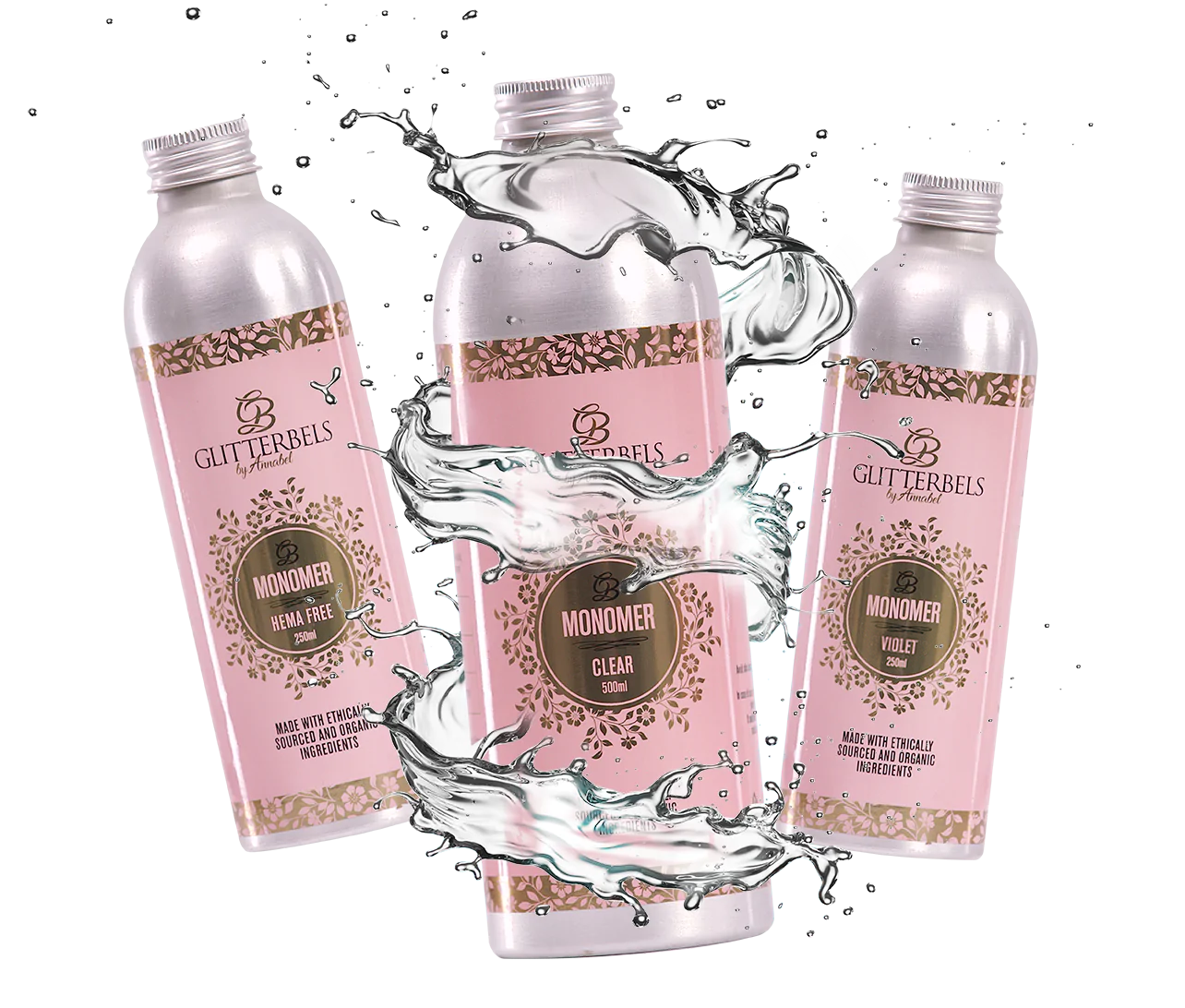In the ever changing world of the nail tech, we professionals continually seek to understand, master and offer new products and services on behalf of our clients. Amongst these, acrylic and gel polish stand out as two predominant choices but over in Europe, hard gel tends to be more popular. This article delves into a comprehensive comparison of how acrylic and hard gel differ. We’ll spotlight the characteristics of each, particularly acrylics, the product that made us famous.
Acrylic Nails: A Spotlight on Glitterbels
Acrylic nails have long been a staple in the nail industry, known for their durability and versatility. The key component in acrylic nails is a combination of a liquid monomer and a powder polymer, which creates a hard protective layer over the natural nail when mixed and applied. Our acrylic nail powder exemplifies this with its fine consistency, ensuring a smooth application and robust finish, first time, every time.
Pros and Cons of Acrylic Nails
The advantages of acrylics include their strength and longevity, making them an excellent choice for clients seeking long-lasting enhancements. Additionally, the versatility in design that acrylics offer is unmatched. However, acrylics can be quite rigid, and trying a DIY removal can potentially damage the natural nail. Regular maintenance is also necessary to keep them looking their best so encourage your clients to visit you to look after them but especially to remove them.

Hard Gel Nails: Understanding the Alternative
Hard gel is a strong, flexible gel that is applied to the nail and cured under a UV light. Unlike acrylic, hard gel stays malleable until cured, and it often provides a glossy finish. For those who are familiar with gel polish but not hard gel; both types of gel are applied in a similar fashion, being painted onto the nail and then cured under a UV or LED light, however soft gel is a lot more porous which means it can be removed with acetone. Hard gels, however, cannot be removed with acetone and need to be filed off.
Pros and Cons of Hard Gel
Hard gel is lauded for its natural appearance and flexibility, which can be more comfortable for the client. The downside (for the customer) include a more challenging removal process and potentially less durability than acrylics, especially if the client uses their hands a lot for work etc.
In-Depth Comparison
When comparing the two, it's crucial to consider factors like client lifestyle, nail health, and maintenance commitment. Acrylics, with their robustness and design versatility, may be preferable for clients who are looking for standout nail art or those with an active lifestyle. In contrast, hard gel could be suited for clients looking for a more natural look and feel. However, everyone should be aware that the hard gel removal process is more tricky than either gel nails or acrylics.
To wrap up, both acrylic and hard gel nail enhancements have their unique strengths and suitable applications. As professionals, our role is to navigate these options, providing clients with the best possible outcome for their nails. While Glitterbels continues to lead in the world of acrylics, gel polish and builder gel, understanding the full spectrum of treatments, including hard gel, remains critical so we can stay on top of our game.

















